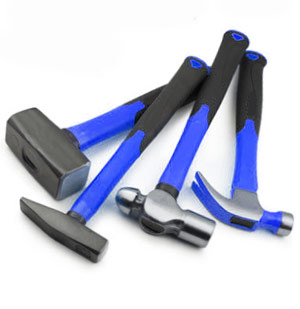Grinding wheels are indispensable tools in various industries, serving the purpose of shaping, sharpening, and finishing workpieces with precision and efficiency. However, with a plethora of grinding wheel options available, selecting the right one for your specific application can be daunting. Factors such as material type, workpiece geometry, and desired surface finish must be carefully considered to ensure optimal results and safety. In this comprehensive guide, we delve into the key considerations and criteria for selecting the perfect grinding wheel for your unique needs.
Understanding Grinding Wheel Anatomy
Before delving into the selection process, it's essential to understand the anatomy of a grinding wheel. A typical grinding wheel consists of abrasive grains bonded together by a matrix material, with additional components such as porosity, structure, and bond type influencing its performance. The abrasive grains determine the cutting action and material removal rate, while the bond material provides support and stability. Furthermore, the wheel's porosity and structure affect chip clearance, coolant flow, and surface finish.
Key Factors in Grinding Wheel Selection
1.Material Compatibility:
The first step in selecting a grinding wheel is identifying the material composition of the workpiece. Different materials require specific abrasive types and bonding agents to achieve optimal results. For example, aluminum oxide abrasives are suitable for grinding ferrous metals, while silicon carbide abrasives are preferred for non-ferrous materials such as aluminum, brass, and ceramics.
2.Workpiece Geometry:
The shape and dimensions of the workpiece play a crucial role in determining the type and size of the grinding wheel required. Flat surfaces may necessitate large-diameter wheels with a wide contact area, while intricate contours and internal features may require smaller wheels with specialized shapes such as cup wheels or grinding cones.
3.Grinding Application:
The intended application of the grinding operation influences the choice of grinding wheel parameters such as grit size, hardness, and bond type. For rough stock removal, coarse grit wheels with softer bonds are preferred, whereas finer grit wheels with harder bonds are suitable for precision grinding and finishing applications.
4.Surface Finish Requirements:
The desired surface finish of the workpiece dictates the grit size and wheel hardness selection. Coarser grit sizes produce rougher surface finishes but facilitate faster material removal, while finer grit sizes yield smoother finishes but may require longer grinding times.
5.Operating Conditions:
Environmental factors such as machine horsepower, spindle speed, coolant availability, and operator skill level must be taken into account when selecting a grinding wheel. Higher horsepower machines can accommodate larger and more aggressive wheels, while slower speed machines may require softer wheels to prevent overheating and premature wear.
6.Safety Considerations:
Safety should always be a top priority when selecting and using grinding wheels. Ensuring compatibility with machine specifications, adhering to recommended operating speeds, and inspecting wheels for damage or defects are essential safety practices. Additionally, using appropriate personal protective equipment (PPE) such as safety glasses, gloves, and face shields is imperative to prevent injuries.
Selecting the right grinding wheel is a critical step in achieving optimal grinding performance and workpiece quality. By considering factors such as material compatibility, workpiece geometry, grinding application, surface finish requirements, operating conditions, and safety considerations, you can make informed decisions to maximize productivity and safety in your grinding operations. Remember to consult with grinding wheel manufacturer and industry experts for additional guidance and recommendations tailored to your specific needs.

